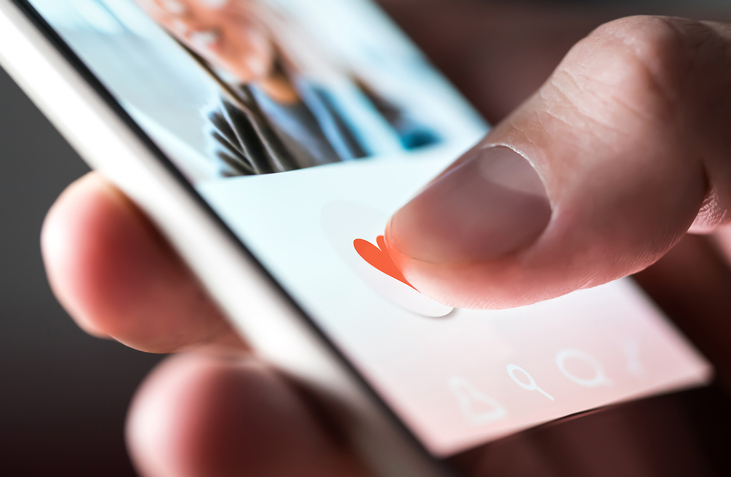8 Lessons Learned From Tinder and Bumble

Describing the recent uprising of online dating apps as ‘remarkable’ is nothing but an understatement. Experts say that nearly 28 million people are going to use them by 2022.
And this statistic only talks about the United States.
Apps like Bumble, Tinder, Match, Hinge, OkCupid and others are quickly taking over the world. There are SO many lessons marketers can learn from them, especially to improve FTUE, or first-time user experience.
In this post, we are going to list out the top lessons one can learn from the success of online dating apps.
Not just that, we are going to help you understand how exactly you can implement them in your upcoming or existing digital marketing strategy.
So, stay with us till the very end!
8 Lessons Worth Learning From Tinder and Bumble
1. Find and Focus on Your Niche
What’s the golden rule of marketing?
It is: ‘Don’t sell anything if it’s not a solution to the customer’s problem.’
Utilizing this golden rule in the world of online dating apps is very simple.
You have a dating app that people who are single will try to use to develop a meaningful relationship with another person.
The ‘problem’ is that people are single, and that is something they want to change.
To make sure your solution reaches the right people, you will have to THOROUGHLY research your market. This is essential because it will lead you to your target audience.
This will mostly involve LASER targeting. In this, you mostly try to target a narrow market, find a profitable position, and try to compete with other players.
An extensive survey conducted by Hinge shows that the biggest problem customers have regarding online dating is about the superficiality of the apps.
This made Justin McLeod (the founder of Hinge) design an online dating application that focused on helping users create deeper connections.
2. Tap into The Unpredictable Award Phenomenon
Gamification of dating experience has been very well documented over the past five years.
Many users on the app are NOT looking for a date. The whole ‘swiping through the profiles’ thing is quite fun for them.
They use the application only to have entertainment. Gamification of the dating experience can be used to create anticipation among the users.
The best way to understand this is by connecting it to the concept of unpredictable awards.
Here, the users’ level of excitement can be regulated using algorithms that come up with little surprises each day. By doing this, the users are constantly engaged.
Most online dating applications tend to lose customers because of bad FTUE. This happens when users install the app, sign-up, get disappointed, and leave.
Just in case you have a poor FTUE, gamifying the dating interfaces using elements like tap-to-like, shake-to-refresh feed, etc. can help you compensate.
3. Make Marketing More Personal
One of the biggest marketing trends that companies around the world are looking to take advantage of is personalization.
Personalization is a useful strategy that gives marketers an opportunity to collect more personal data from their target audience.
This can go on to affect the way companies promote their products and services. The basic design of their products can be inspired by the concept of personalization.
Coming back to dating apps, one of the most common things you will find is that they will ask for your basic personal information.
It is important for them to know your age and location so that they can shape your user experience to perfection.
If you are looking to use personal data in your content marketing strategy, you must take lessons from these online dating apps.
The application of data analysis and interpretation will also help you improve your application’s FTUE.
4. User-Generated Content – Let Users Speak
The surge of online dating apps and the simplification and gamification of online dating has had a great impact on how millennials approach online dating.
People could say the most important impact of gamification is that they have helped get rid of the shyness around the concept of dating.
This has allowed users to share their online dating experiences on various online platforms. In other words, they are helping marketers with user-generated content and consumer insights.
Applications like Bumble and Tinder get nearly 5000 mentions on social media.
One of the main reasons why they are so successful with user-generated content is that the marketers go out of their way to hijack a viral story.
Apps like Bumble even have created a form that allows users to share their stories on their experiences.
Talk about taking social listening to the next level!
5. Effective Influencer Marketing
Creating blog posts for video content around your online dating app is one of the BEST ways to generate buzz for your product.
But, that’s an organic way to promote a product online. It works, but it takes time.
This is one of the reasons why influencer marketing has been a go-to marketing strategy for marketers of online dating apps.
Because the content related to online dating is interesting to fans of content creators.
Hinge, an online dating app, makes the best of user-generated content and influencer marketing to create SUPERB social media campaigns. The marketers at Hinge have been working closely with popular meme accounts to create organic posts that bring in definite results.
Influencer marketing is crucial in the marketing of many apps and brands. By creating content that is very much relatable to the general public, it generates a sense of authenticity in the target audience.
6. App Store Optimization
App Store Optimization is definitely a critical part of any online dating app marketing strategy.
This is because your application is going to compete against almost 2 MILLION other applications for visibility.
According to statistics, the average Apple user spends almost 33 minutes per month on the App Store. This data was for the United States back in 2018. Since then, the time spent on the App Store has likely gone up.
Although this is a lot of time for marketers to improve their products’ visibility, they cannot rely on users to find their way to the product through the app store.
Marketers have to take advantage of the app store search algorithm to ensure the users are being directed to your application.
This is exactly where the App Store Optimization comes into play.
App Store Optimization is nothing but a strategic system. It involves elements that can tactfully increase the relevance of your application.
7. Viral Video Marketing
Viral videos work. This is because it tends to trigger certain emotions in the target audience. These emotions make them watch and share the video over and over again.
Creating funny videos related to your online dating application really helps you gain visibility on the Internet overnight.
Viral app videos can get you millions of shares and views online. However, they require constant experimentation to figure out what exactly your audience likes.
Statista shows that many videos have been able to gather millions of views in just 24 hours. This is a result of a successful integration of influencer and viral video marketing.
8. Clear Consistent Communication
Inconsistent communication doesn’t end well in modern-day marketing.
The moment customers start feeling the inconsistency in voice, tone, and content of a brand’s marketing, they tend to leave the experience.
The inconsistency in communication leaves the customer with a bad taste in the mouth.
Looking for customer backlash? Just make one bad joke or write a casual description of any sensitive social issue. Your brand will be done and dusted right there.
Therefore, it is important that you come up with simple messages to reflect your brand values. And, you have to know what customers can expect from your products.
Your visual branding should be consistent across all channels to prevent any kind of marketplace confusion.
Final Thoughts
These are great tips, aren’t they?
But, there’s one more lesson left to improve FTUE and any experience after. It is not to dupe people.
Honest interactions are the foundation of trust. Also, to build long-term loyalty with customers, you will have to quit the short-term sales mindset.
That pretty much sums it up for this post.
We hope you enjoyed our content. Have questions? Feel free to put them down in the comments section. We would love to hear from you!



